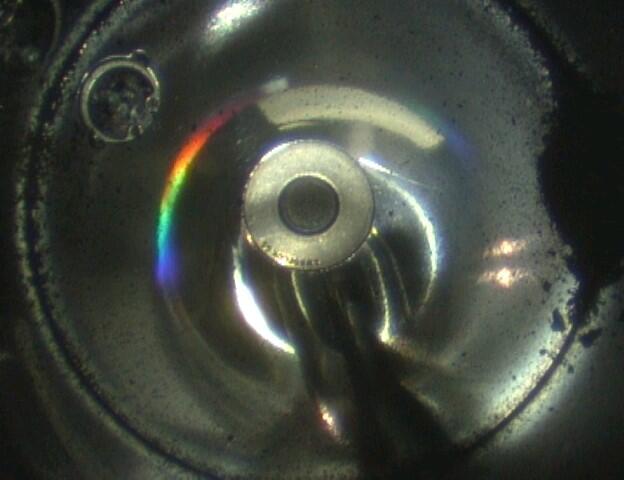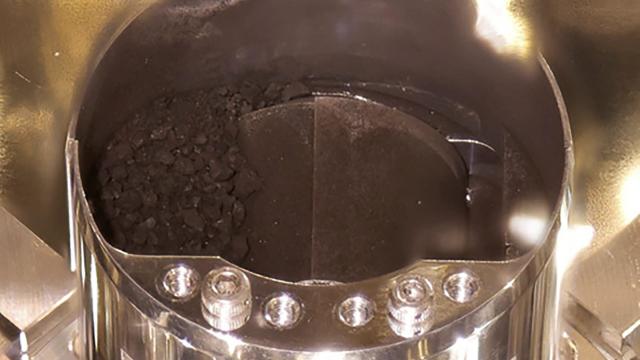It looks like coffee beans in a grinder, but it’s actually bits of dust and pebbles scooped up from the surface of asteroid Ryugu. The Japanese space agency confirmed the presence of these precious samples earlier today, following the recent return to Earth of its Hayabusa2 spacecraft.
For only the second time in history, a spacecraft has managed to bring bits of an asteroid back to Earth. The Japan Aerospace Exploration Agency (JAXA) did it in 2010, when the Hayabusa probe returned samples from asteroid Itokawa, and now again, with Hayabusa2 successfully delivering the goods from asteroid Ryugu, as JAXA confirmed in a press release issued yesterday.
What’s more, the probe also managed to snag some gas at the asteroid, which has never been done before. Speaking to reporters earlier today, Hayabusa2 project manager Yuichi Tsuda described the return of sample material and gas from an asteroid as a “major scientific milestone,” as reported in the Associated Press.
The probe also collected more material than anticipated, which is very good news. That means JAXA scientists can expand the scope of their work, and possibly share these bits of material with outside experts, including those at NASA.

A storage device containing the surface samples and gas was retrieved from the Australian desert on December 6, and it arrived in Japan two days later. Hayabusa2 returned to Earth after travelling more than 300 million kilometres from the asteroid. The probe arrived at Ryugu in June 2018.
The probe performed two brief touchdowns, the first to collect samples from the surface and the second to collect deeper materials kicked up from below. Hayabusa2’s efforts looked really promising at the time, but JAXA couldn’t know for sure until the probe returned its 40-centimetre wide storage container to Earth.
On Monday, JAXA scientists confirmed the presence of dark black grains at the entrance of the first storage chamber, and earlier today it confirmed the presence of sandy materials and pebbles inside the device, along with the asteroid’s trapped gas (sorry, not sorry). That Hayabusa2 managed to scoop up some actual pebbles, and not just dust, was deemed a big victory, with JAXA scientist Hirotaka Sawada saying he “was almost speechless” at the sight, reports AP.
The second storage chamber containing subsurface materials, which were gathered during the second touchdown, has not yet been opened, but JAXA expects to do so next week.
These pristine samples, which weren’t affected by atmospheric entry, could provide clues about the early solar system and how it formed. Scientists will perform chemical analyses on the samples, paying special attention to the possible presence of organic compounds. In addition to revealing new details about the early solar system, the samples could show how asteroids contributed to the early conditions on Earth, including the delivery of water. The scientists will also try to identify the type and age of the gases returned to Earth.
This stage of the Hayabusa2 mission is over, but now the fun science-y stuff begins. The spacecraft is currently awaiting its next set of instructions, as scientists consider a mission with the probe to study the potentially hazardous asteroid Apophis, which will come to within 31,000 kilometres of Earth in 2029.
